Junction Transistor
Junction Transistor: Overview
In this topic, we will learn about the junction transistor as a semiconductor device. p-n junction diode under forward bias and reverse bias is also explained here in detail.
Important Questions on Junction Transistor
An n – p – n transistor can be used to produce self-sustained oscillations.
The given statement is true of false:
Choose the correct expression for the current gain in n – p – n transistor in CE configuration:
Choose the correct expression for the current gain in n – p – n transistor in CE configuration:
In an n-p-n common emitter (CE) transistor the collector current changes from to for the change in base current from and , respectively. The current gain of transistor is _____.
For a given transistor amplifier circuit in CE configuration and . Value of base current is
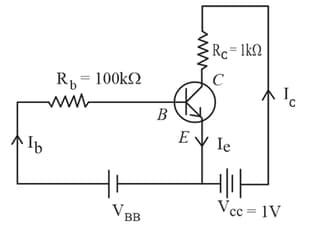
The collector current of a transistor is and base current is . The current gain of the transistor is
The collector current of a transistor under separated conditions depends on
When a transistor is used as a Switch, it operates in the
If is the emitter current, the base current and the collector current of a transistor, then which of the following statements are NOT TRUE?
(i)
(ii)
(iii)
(iv)
The characteristics of an transistor in common emitter configuration is shown in the figure below. is the base current, is the collector current and is the voltage at the collector with respect to the emitter. From the data shown here we may conclude
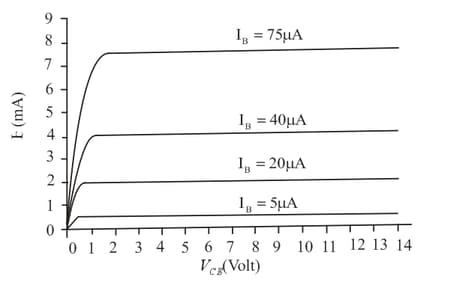
For a transistor in common emitter configuration, the emitter current is and the base current is The of the transistor is
The correct relationship between two current gains in a transistor is (where symbols have usual meanings)
The collector current is in transistor. If electrons emitted reach the collector then:
Find the value of the resistor , if the base current in the transistor circuit shown in the figure is .
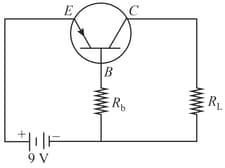
Consider a common-base amplifier made by a transistor, the current gain is and emitter current is . The base current is:
Read the following diagram and tell which of the following statements are true:-
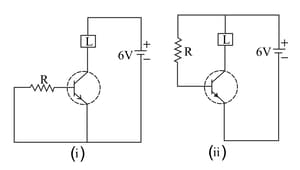
The figure shows that transfer characteristics of a base biased common emitter transistor. Which of the following statements are not true for the configuration?
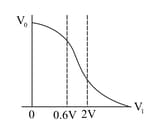
Two amplifiers and are connected in series. Find the output voltage if their voltage gains and are and , respectively and input voltage is ?
A Transistor is used in common emitter mode in an amplifier circuit. A change of in the base current brings change of in collector current and in base emitter voltage. Find voltage gain of the amplifier, if of load is used -
An transistor is connected in common emitter configuration in which collector supply is and the voltage drop across the load resistance of connected in the collector circuit is . If current amplification factor is, Then collector – emitter voltage and base current are respectively -
